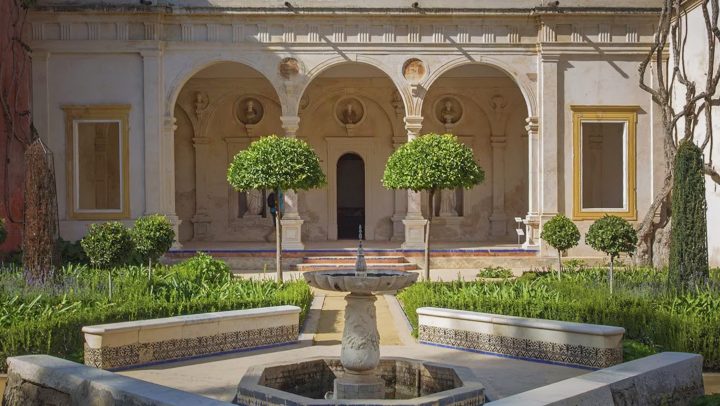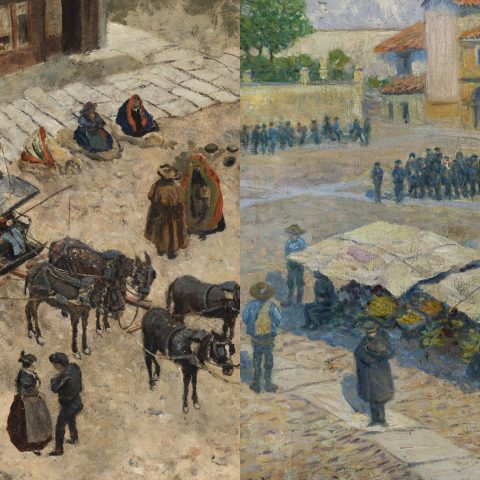Discover the beauty of Andalusia’s historic gardens, where art and nature merge in sublime splendor. Explore these green oases that reflect a rich cultural heritage and captivate all visitors.
The summer months are a perfect opportunity to visit the historic gardens at their best. Art and nature go hand in hand in spaces where plants, architecture and art intermingle in such a sublime way that makes them inseparable. It would be unthinkable, for example, an Alhambra without the noise of the Fountain of the Lions, the reflection of the muqarnas arcades or the scent of the myrtles and orange trees. The pleasure generated by all these elements has captivated travelers, scholars and explorers.
The Casa de Pilatos is probably one of the most beautiful and exceptional places in Spain. The construction of the building seems to define to a large extent the essence of Spanish art; the combination of Moorish, Mudejar, Roman and Renaissance styles makes it a must-see for any art lover. Located in the heart of Seville, its history dates back half a millennium; however, its different owners have gradually transformed it according to fashions and collections. In its interior is treasured one of the first and most important collections of Roman art, largely imported by the first Duke of Alcalá de los Gazules. Italian artists such as the architect Benvenuto Tortello transformed the medieval palace into a Renaissance residence. Fully Spanish arches of Mudejar and Plateresque inspiration coexist with loggias of Corinthian capitals, alternated by niches and niches that housed the imperial marbles. Courtyards and gardens are reminiscent of the Renaissance ideal, where the order and symmetry of the building are reflected in nature itself. Geometric games of boxwoods and myrtles, the orange blossoms and jasmine with their scent, provoke a memorable memory in the visitor. Currently, the property is part of the Fundación Casa Ducal de Medinaceli and is open to the public.
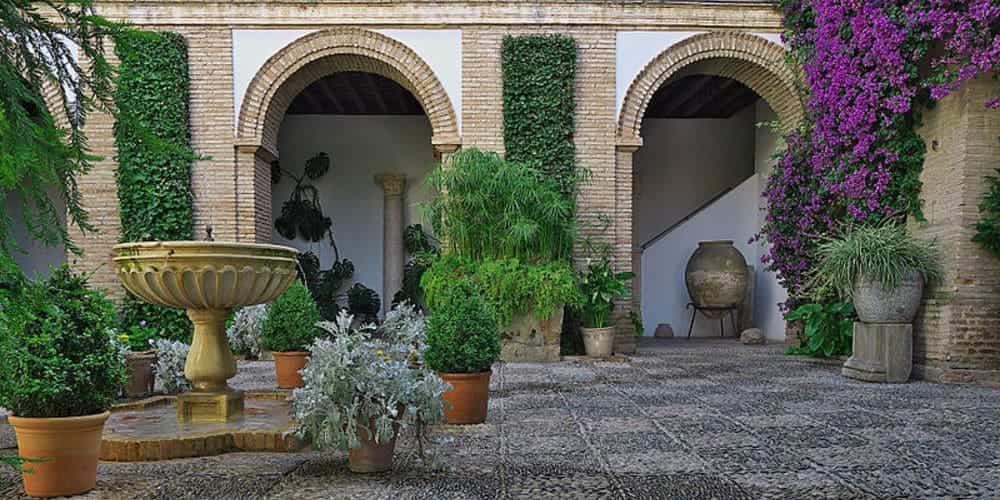
Other great Andalusian aristocrats and collectors endowed their residences with an overflowing beauty, as is the case of the Marquises of Villaseca and Viana in Cordoba. In this place, the courtyards also play a fundamental role; the noble courtyards are surrounded in the manner of the peristyles by superimposed colonnades, while the working and more private courtyards are decorated with plants in the form of pots hanging from the walls, ivy, bougainvillea and climbing plants. Outside the courtyards there are larger gardens, where fountains follow one after the other between pools and ponds in the shade of cypress trees. The enclosure of these spaces is intuited by the overflowing greenery through the exterior walls and some few barred windows that seem to enclose the idyll that is generated there. The building, although it stands out for its austere exterior, is fully open and accessible. Acquired at the end of the last century by the Cajasur Foundation, it is now responsible for showing it to the whole world as one of the landmarks of the city with the largest historic center in the world, as declared by Unesco.
One of the most important botanical gardens in Spain created under private initiative is located in the city of Malaga, the Finca de la Concepcion. Located on the banks of the Guadalmedina, it was conceived as an oasis by the Marquises of Casa Loring, where a wide variety of species from all over the world would gather, being in some cases the first ones seen in our country. In addition to exotic and rare plants, the estate had gazebos, fountains, an exedra and a pavilion where part of the important archaeological collection was kept. This wide selection was so relevant that it earned him fame throughout Europe. It is currently on display at the Provincial Museum of Malaga and the National Archaeological Museum.
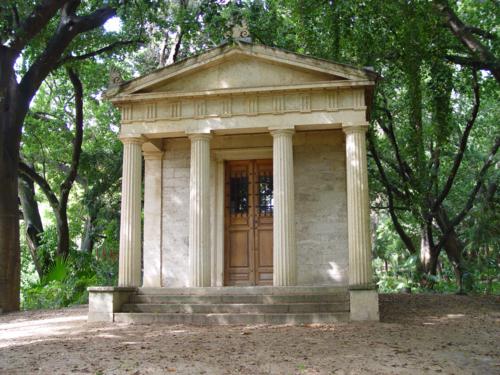
It takes several hours to cover the almost four hectares. All this time spent on the estate is not much if we take into account that the proposed route includes gardens of Californian-inspired cacti, fields of Mediterranean aesthetics, the boundless shade of Australian ficus, cedars or Egyptian date palms. The property was assimilated by the City Council of Malaga, which has turned it into one of the world’s botanical references.
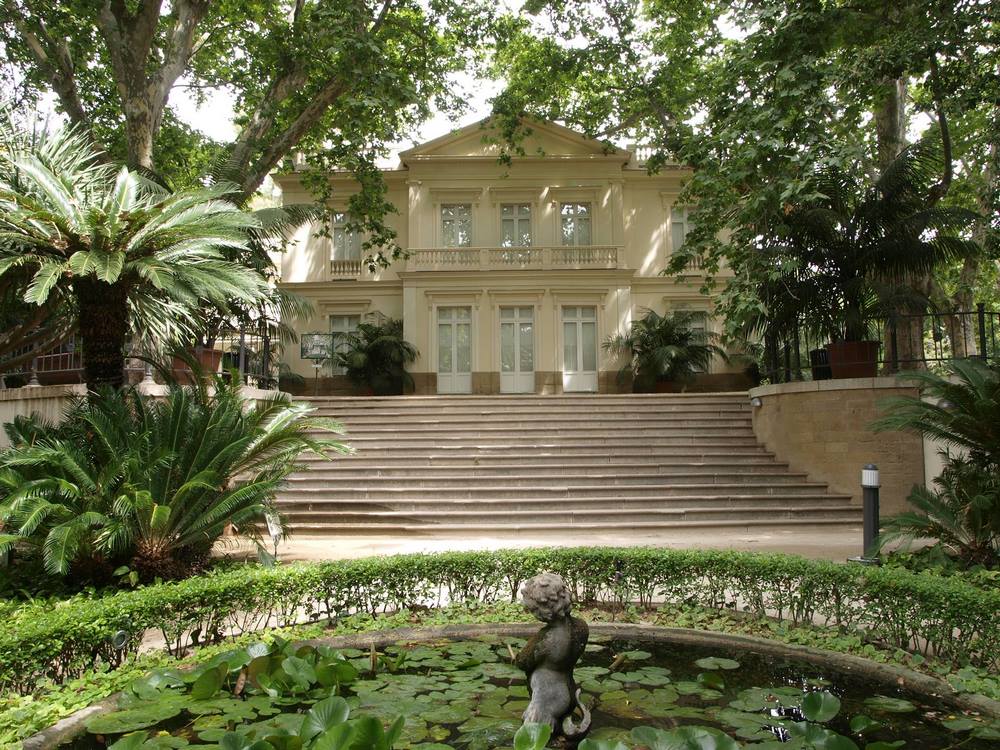
Andalusia has been home to cultures as diverse as the Phoenicians, Romans, Carthaginians and Muslims from Syria to Egypt. Its pure essence of the Mediterranean was enriched with the echoes of an overseas empire and the fascination for the unknown. Andalusian gardens are a reflection of this incredible heritage. As in collecting, private patrons have created and nurtured one of nature’s treasures.

